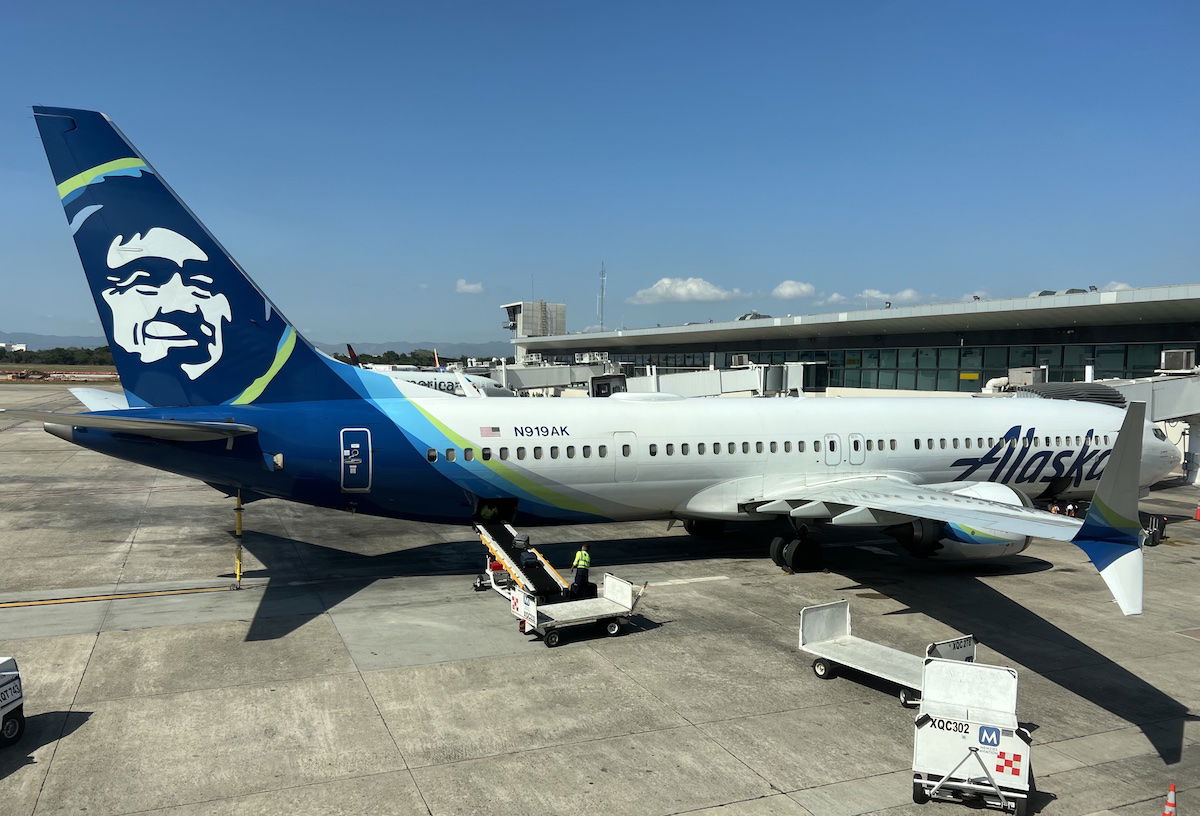
Whereas tail strikes occur each every so often, two Alaska Airways jets had tail strikes inside minutes of each other, resulting in all Alaska flights briefly being grounded. The backstory right here is fairly fascinating, as reported by The Seattle Occasions.
Two Hawaii-bound Alaska 737s have tail strikes
On the morning of January 26, 2023, two Alaska Boeing 737s had tail strikes six minutes aside, whereas departing Seattle for Hawaii:
- At 8:48AM, a Boeing 737 MAX 9 working flight AS801 headed for Kona (KOA) had a tail strike
- At 8:54AM, a Boeing 737-900ER working flight AS887 headed for Honolulu (HNL) had a tail strike
In every case, the pilots felt a slight bump throughout takeoff, whereas flight attendants in the back of the cabin heard a scratching noise. The planes shortly returned to Seattle, and landed safely.
Whereas tail strikes occur now and again, it’s uncommon to see them back-to-back on the similar airport, on the identical sorts of routes, and with related kinds of planes.
At this level, Alaska’s on-duty director of operations instantly paused all takeoffs for the airline:
“At that time, two in a row like that, that’s once I mentioned, ‘No, we’re achieved. That’s once I stopped issues.”
Inside 22 minutes, the bottom cease for Alaska flights ended, as the difficulty was found. So, how may this occur?
Software program bug responsible for tail strikes
Alaska Airways makes use of software program from an organization named DynamicSource to make plane efficiency calculations. This offers pilots necessary particulars about takeoff settings, which they enter into their flight pc, to find out how a lot thrust the engines ought to use, and what the takeoff pace might be.
On this specific late January morning, a software program bug in an replace delivered incorrect takeoff weights. Particularly, the info confirmed that the planes had been 20,000 to 30,000 kilos lighter than they really had been. In consequence, each planes used much less thrust than they need to have, that means that the planes rotated too early.
The excellent news is that these weren’t “shut calls.” That’s as a result of the planes nonetheless had sufficient runway that thrust may have been elevated to get the planes off the bottom with room to spare.
Moreover, the 737-900ER and 737 MAX 9 are the longest variations of the 737 which can be at present in operation, and are additionally most liable to tail strikes. That’s why these planes typically have tail skids, that are little gadgets towards the decrease again of the fuselage that restrict the affect of a tail strike.
It was decided that of the 727 Alaska flights that day, solely 30 took off with incorrect takeoff knowledge. It was solely the 2 Alaska flights to Hawaii that truly had severe points, although. Presumably that’s as a result of the planes had been operated by the biggest variations of the 737, and likewise as a result of they had been the heaviest, given the lengthy routes they had been working.
Now, the foremost query is how this incorrect knowledge didn’t increase any issues for pilots. These planes have most takeoff weights of effectively below 20,000 kilos, so being off by as much as 30,000 kilos is important, as that’s as much as 15% of the utmost takeoff weight.
You’d suppose these pilots would have a extremely good intestine intuition as to what the takeoff weight ought to be earlier than they get their knowledge, and also you’d suppose the mathematics being off by this a lot would trigger some handbook evaluate.
Whereas the pilots on these two flights seemingly didn’t discover something to be suspicious, this drawback was solved as a result of different pilots contacted operations, and knowledgeable them that their numbers appeared off.
Backside line
In late January, Alaska Airways had two Boeing 737 tail strikes simply minutes aside. Because it was later decided, this was as a consequence of a software program glitch, which calculated the planes’ weights as being as much as 30,000 kilos lighter than they really had been.
This precipitated the pilots to use much less thrust than they really wanted, and likewise rotate sooner than they need to have. Thankfully this glitch was shortly found, so different flights didn’t find yourself being impacted.
What do you make of this 737 tail strike incident?


